Updated: 15-Jun-2021
The "China Aero-Technology Import and Export Corporation" brings together the major aircraft engine factories located in Qouzhou, Xian
-Regarding the piston aircraft engines that were manufactured under Russian license in the beginning of this corporation, stand out the thousands of delivered M-11.
-At the National Aviation Engine Factory, the 260 hp Ivchenko AI-14R and 1,000 hp Shvetsov ASh-621R were also built under license. In China these engines were known as HS-6A (of Huosai) and HS- 5, respectively, and were built from 1958 onwards.
-The CATIC HS-16 and HS-26 for target aircraft were also offered for ULM in the West.
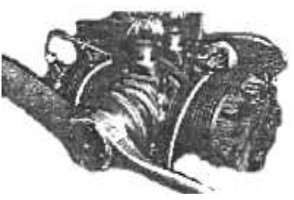
"Catic HS-26"·
-In 1956, they started to build the 14-cylinder, radial Shvetsov Ash-82V engine. It delivered 1,700 hp.
-The first engine of Chinese design was the HS-16 (Huosai-16), a horizontally-opposed, four-cylinder, two-stroke engine for ULM or UAVs, which delivered 16 hp at 6,000 rpm.
-On behalf of the State Machinery Factory "Yuhe" in Nanjing they built -for target aircraft as well- the Yuhe YH-280.
-It had four horizontally opposed cylinders and delivered 15 hp at 6,000 hp.

"YH-280"
-This factory is based on the experience during the Korean War in which a large number of Russian MiG-15 were delivered to the North Koreans together with Chinese technicians.
-They got familiarized with the Klimov RD-45 (derived from Rolls-Royce Nene).
-Later they built the Russian Klimov VK-1F delivering almost 7,500 lbf of thrust with the new Chinese name of WP-5.
-This factory also built the WoPen WP8 that was based on the Mikulin RD-3M and AM-3M.
-For the supersonic MiG-19, they manufactured under license the RD-9 (WP-6) variant and the Wojiang 5A-1 (WJ-5A1) turboprop that was the Ivchenko AI-24A. They also built the WJ-6 (the Ivchenko AI- 20K) and the WoZhou-5 (WZ-5).
-There are international agreements with Pratt & Whitney for the PT-6 and with Turbomeca for the Arriel, in China known as WZ-8, for helicopters.
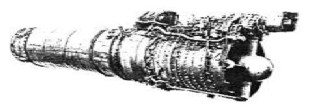
"WP-6A"
-For the Chinese supersonic fighters, they built the WP-6s, which were Tumanskii RD-9BFs, in amounts of several thousands.
-The WP-6A version had improvements on the compressor inlet guide vanes and was built with more advanced materials. It also had a more stabilized afterburner.
-With this afterburner, the 6,600 lbf of thrust increased to nearly 8,300 lbf
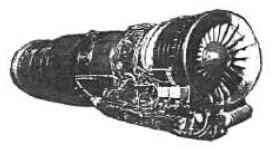
"WP-7"
-The Chengdu Factory made a modified Tumansky R-11 version that was known as WP-7BM delivering 9,700 lbf of "dry" thrust and almost 13,500 lbf with afterburner.
-The Li Yang WP-13 is a WP7 development that gave 9,000 lbfof dry thrust and approximately 14,500 lbf with afterburner. It was intended for the Chinese J-8 aircraft.
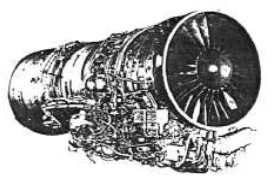
"WP-13"
-The Shenyang WS-6 engine is a two shaft turbofan, or "Twin Spool", which has a low pressure LP, and a high pressure HP shaft. With its afterburner it delivers around 27,500 lbf of thrust.
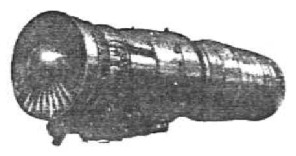
"WS-9"
-We do not have enough information about the Catic WS-9 but it does not seem a very large engine. (WS = WhoSan).
-In short, Catic brought together several factories to build aircraft engines, such as piston engines from Zhuzhou where they built the HS-5 (ASH-62-IR, 1,000 hp) models, the HS-6A (AI-14RF, 285 hp) and the small underpowered HS-16, HS-26 and HS-510.
-To this group of piston engines are added the ones from Nanjing, the YH-280 and HS-5A built in Harbin (AI-14RF, 285 hp).
-Regarding turboprops, the Shanghai factory made the WJ-5 (AI-24A, 2,550 SHP) and the WJ-6 (AI-20K, 4,000 SHP).
-Also in Shanghai, they made the WZ-5, -6 and -8 turboshafts. The last one was derived from the 700 hp Arriel.
-Turbojets were more manufacturer dispersed. In Harbin they built the WP-2 (RD-45 almost 5,000 lbf of thrust); the WP-5 (VK-1F, 7,500 lbf) and WP-5A (VK-1A, 6,000 lbf).
-In Shengyang were built the WP-6 and -6A, the former a RD-9BF with a power output of over 7,000 lbf and the latter, a more powerful derivative from the former.
-In the Chengdou factory they made the WP-7A and 7b (the former was the R-11 and the latter the same engine with afterburner).
-In Xiang, they built the WP-8 (RD-3M, 20,950 lbf) and in Liyang the WP-13A (RD-15000 13 lbf). And finally, there was not much information for the WS-9 at the time of this writing.
The nomenclature used by the Chinese to identify their engines are as follows:
-Piston (HuoSai) = HS
-Turbofan (WoShan) = WS
-Turboshaft (WoZhou) = WZ
-Turboprop (WoJiang ) = WJ
-Turbojet (WoPen) = WP
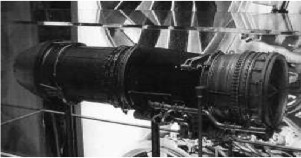
"Catic stand at the Paris Air Show"
Engines of CATIC
Model: Ash-82V
Model: Austro Engines
Model: Continental Motors
Model: HS-16
Model: HS-26

"Catic HS-26"
Model: HS-5 (Ash-62-IR)
Model: HS-510
Model: HS-6A (AI-14R)
Model: M-11
Model: WJ-5A1 (AI-24A)
Model: WJ-6 (AI-20K)
Model: WP-13

"Catic -WP-13"
Model: WP-13A (RD-13)
Model: WP-2 (RD-45)
Model: WP-5 (VK-1F)
Model: WP-6 (Mikulin AM-5, Tumansky RD-9)

"Catic -WP-6A"
Model: WP-7 (R-11)

"Catic -WP-7"
Model: WP-7BM (R-11)
Model: WP-8 (RD-3M)
Model: WS-6
Model: WS-9

"Catic - WS-9"
Model: WZ-5
Model: WZ-6 (Turmo Lic.)
Model: WZ-8 (Arriel Lic.)
Model: YH-280

"Catic -YH-280"


